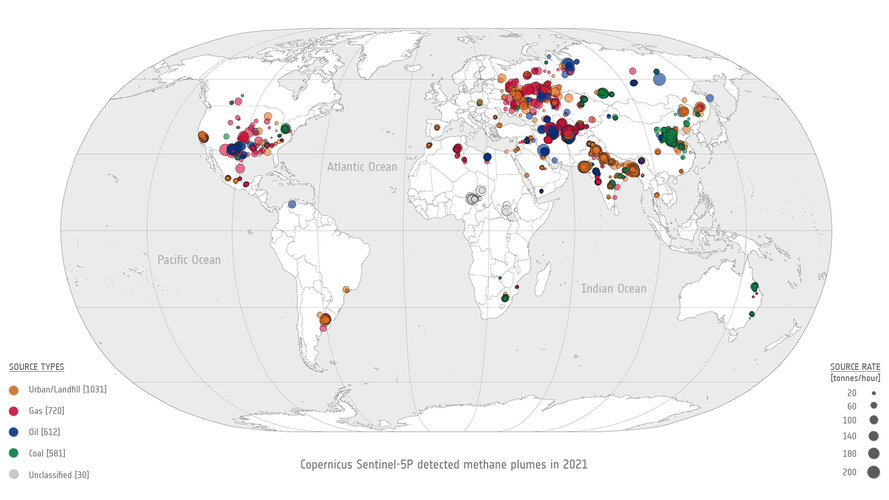
“This information is used by the United Nations' International Methane Emissions Observatory to find a solution together with the responsible companies or authorities.”
Co-author Bram Maasakkers, from SRON, added, “The dozens of methane plumes that Tropomi detects every week really present a golden opportunity in the fight against global warming.”
“If it’s visible from space, it is serious. For the first time, we now get a good global picture of these super-emitters. In our publication, we describe the 2974 plumes that we found in 2021; 45% originate from oil and gas facilities but we also see plumes from urban areas (35%) and coal mines (20%).
“We detect human-made emissions with a climate impact that is significantly larger than total greenhouse gas emissions of The Netherlands. In many cases, those leaks are easy to fix.”
The paper, published today in Atmospheric Chemistry and Physics, can be accessed by clicking here.
A three-tiered approach for methane detection
Typically, the detection of methane emissions relies on Copernicus Sentinel-5P. Until fairly recently, scientists have only begun harnessing the power of combining data from multiple satellites to monitor methane emissions from space which included the combined capabilities of Copernicus Sentinel-5P and Sentinel-2 satellites.
These high-tech space-based tools work in tandem to monitor and assess methane emissions on a global scale, allowing researchers to not only detect the presence of methane but also to localise and quantify emissions accurately.
With daily global coverage, Sentinel-5P is renowned for its high-precision methane measurements and can detect methane leaks anywhere on Earth. However, there’s a catch. The spatial resolution is relatively coarse, at 7x5.5 km. This means it can identify the presence of methane but not pinpoint its source with precision.
The Sentinel-2 satellites, on the other hand, are equipped with multi-band instruments that are not designed to observe methane concentrations but can identify precise locations of major methane leaks (emitting more than one tonne per hour) with a remarkable resolution of 20 m. But Sentinel-2 lacks daily global coverage, so it might miss out on capturing crucial data during certain emission periods.
But what about the Sentinel-3 mission? The satellites are equipped with multi-band radiometers that can observe shortwave infrared bands which are sensitive to methane concentrations. These satellites offer global coverage on a daily basis and a ground pixel resolution of 500 m.
In a recent paper published in Remote Sensing of Environment, researchers from SRON found that the Sentinel-3 satellites can retrieve methane enhancements from its shortwave infrared band measurements. Impressively, it can detect the largest methane leaks of at least 10 tonnes per hour, depending on factors like location and wind conditions, every single day. This puts it in a unique position to identify and monitor methane leaks.



